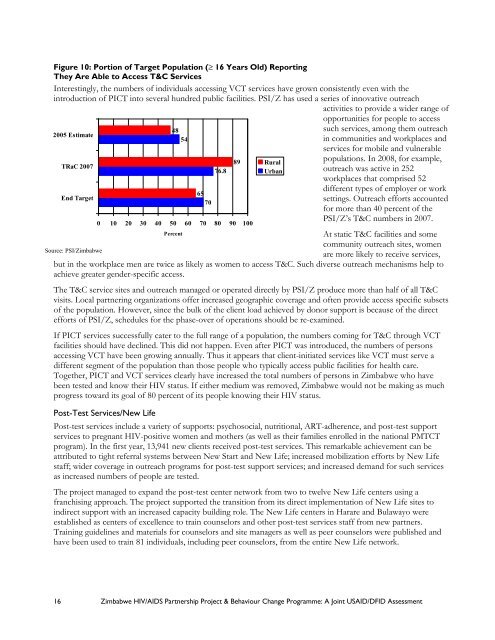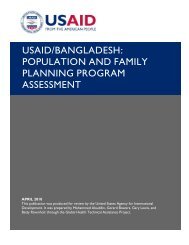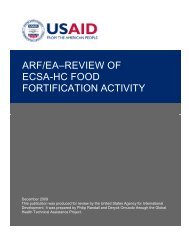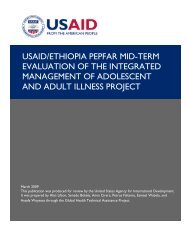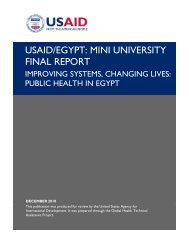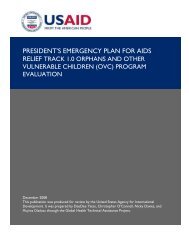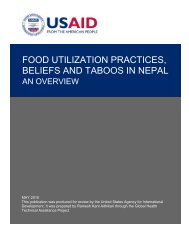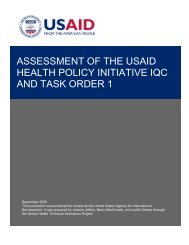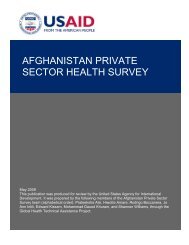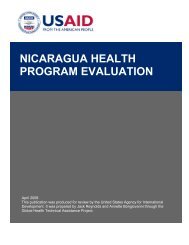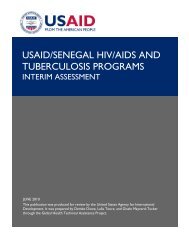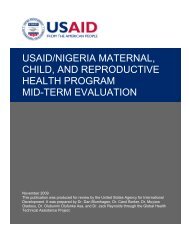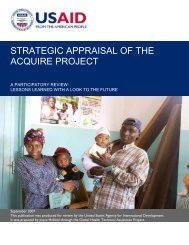Zimbabwe HIV/AIDS Partnership Project & Behaviour Change
Zimbabwe HIV/AIDS Partnership Project & Behaviour Change
Zimbabwe HIV/AIDS Partnership Project & Behaviour Change
- No tags were found...
Create successful ePaper yourself
Turn your PDF publications into a flip-book with our unique Google optimized e-Paper software.
Figure 10: Portion of Target Population (≥ 16 Years Old) ReportingThey Are Able to Access T&C ServicesInterestingly, the numbers of individuals accessing VCT services have grown consistently even with theintroduction of PICT into several hundred public facilities. PSI/Z has used a series of innovative outreachactivities to provide a wider range ofopportunities for people to access2005 EstimateTRaC 2007End Target4854657076.889such services, among them outreachin communities and workplaces andservices for mobile and vulnerablepopulations. In 2008, for example,outreach was active in 252workplaces that comprised 52different types of employer or worksettings. Outreach efforts accountedfor more than 40 percent of thePSI/Z’s T&C numbers in 2007.PercentAt static T&C facilities and somecommunity outreach sites, womenare more likely to receive services,but in the workplace men are twice as likely as women to access T&C. Such diverse outreach mechanisms help toachieve greater gender-specific access.Source: PSI/<strong>Zimbabwe</strong>0 10 20 30 40 50 60 70 80 90 100RuralUrbanThe T&C service sites and outreach managed or operated directly by PSI/Z produce more than half of all T&Cvisits. Local partnering organizations offer increased geographic coverage and often provide access specific subsetsof the population. However, since the bulk of the client load achieved by donor support is because of the directefforts of PSI/Z, schedules for the phase-over of operations should be re-examined.If PICT services successfully cater to the full range of a population, the numbers coming for T&C through VCTfacilities should have declined. This did not happen. Even after PICT was introduced, the numbers of personsaccessing VCT have been growing annually. Thus it appears that client-initiated services like VCT must serve adifferent segment of the population than those people who typically access public facilities for health care.Together, PICT and VCT services clearly have increased the total numbers of persons in <strong>Zimbabwe</strong> who havebeen tested and know their <strong>HIV</strong> status. If either medium was removed, <strong>Zimbabwe</strong> would not be making as muchprogress toward its goal of 80 percent of its people knowing their <strong>HIV</strong> status.Post-Test Services/New LifePost-test services include a variety of supports: psychosocial, nutritional, ART-adherence, and post-test supportservices to pregnant <strong>HIV</strong>-positive women and mothers (as well as their families enrolled in the national PMTCTprogram). In the first year, 13,941 new clients received post-test services. This remarkable achievement can beattributed to tight referral systems between New Start and New Life; increased mobilization efforts by New Lifestaff; wider coverage in outreach programs for post-test support services; and increased demand for such servicesas increased numbers of people are tested.The project managed to expand the post-test center network from two to twelve New Life centers using afranchising approach. The project supported the transition from its direct implementation of New Life sites toindirect support with an increased capacity building role. The New Life centers in Harare and Bulawayo wereestablished as centers of excellence to train counselors and other post-test services staff from new partners.Training guidelines and materials for counselors and site managers as well as peer counselors were published andhave been used to train 81 individuals, including peer counselors, from the entire New Life network.16 <strong>Zimbabwe</strong> <strong>HIV</strong>/<strong>AIDS</strong> <strong>Partnership</strong> <strong>Project</strong> & <strong>Behaviour</strong> <strong>Change</strong> Programme: A Joint USAID/DFID Assessment


